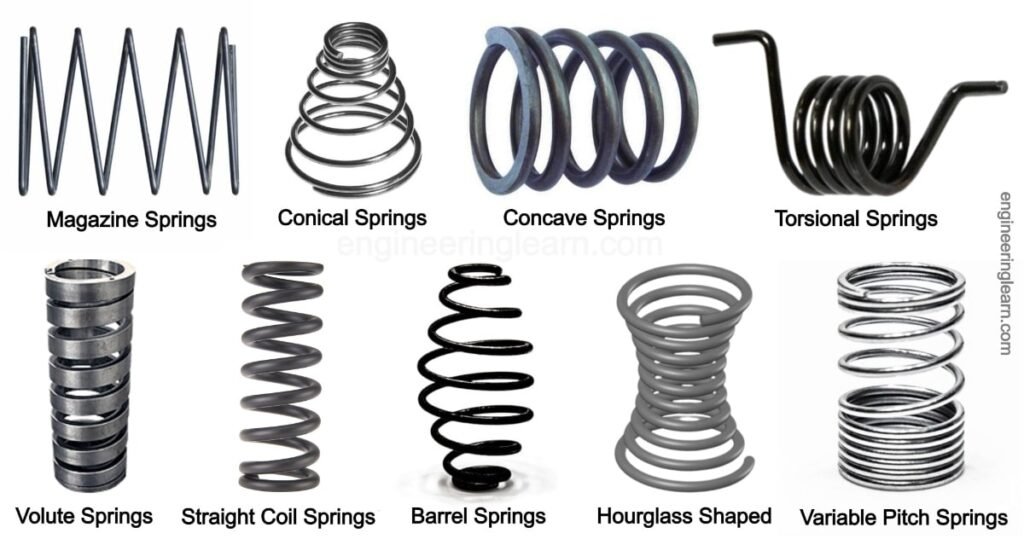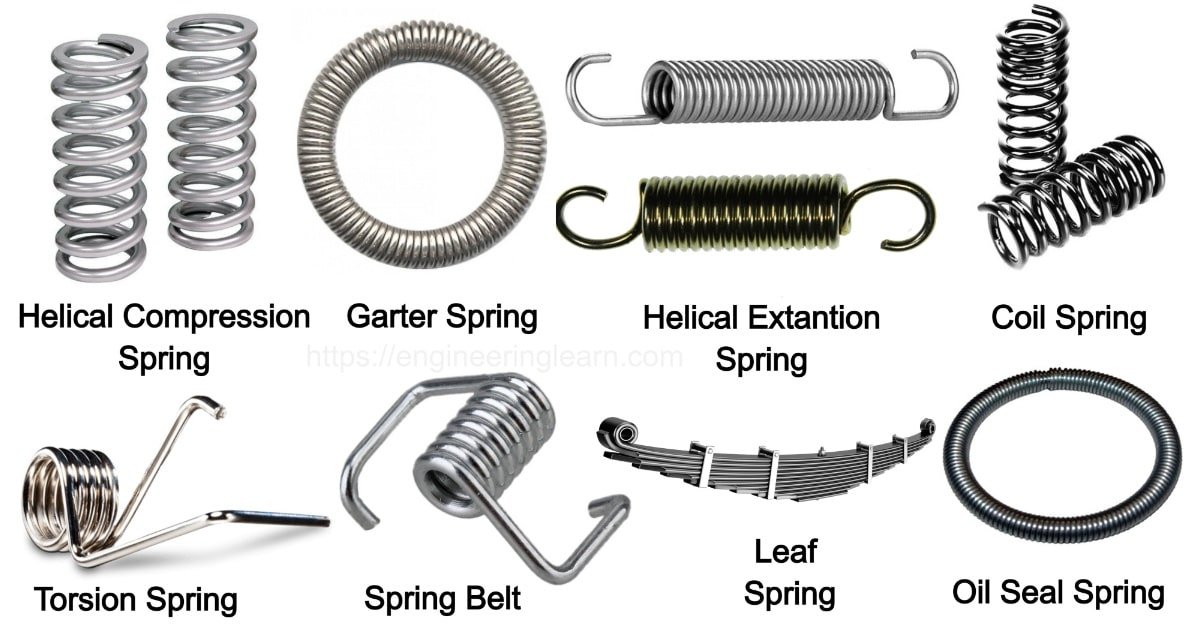Different Types of Springs

What is a Spring?
Spring is an elastic object that stores mechanical energy and is usually made of steel. When a conventional spring (without stiffness) is compressed or stretched from its rest position, it exerts an opposing force approximately proportional to the change in length The spring rate or spring constant is the change in its force, divided by the difference in the spring’s deflection. Simply put, it is the gradient of the force versus deflection curve. The rate of an extension or compression spring is expressed in units of force divided by distance (N/m or lbf/in). Nowadays, springs are used in almost every industry. In addition, there are many spring designs, shapes, and sizes available. Each type of spring can be further characterized. To understand all these, we are going to discuss different types of springs, their advantages, and disadvantages, along with their applications.
Types of Springs
- Helical springs
- Extension springs
- Torsion springs
- Compression springs
- Spiral springs
- Disk springs
- Leaf springs
- Linear springs
- Variable-rate springs
- Flat springs
- Machined springs
- Molded springs
- Serpentine spring
- Gas springs
- Balance springs
Thanks from Engineering Learn

ITI Student Resume Portal
रिज्यूम पोर्टल का मुख्य उद्देश्य योग्य छात्रों की जानकारी सार्वजनिक पटल पर लाने की है जिससे जिन्हें आवश्यकता हो वह अपने सुविधा अनुसार छात्रों का चयन कर सकते हैं

